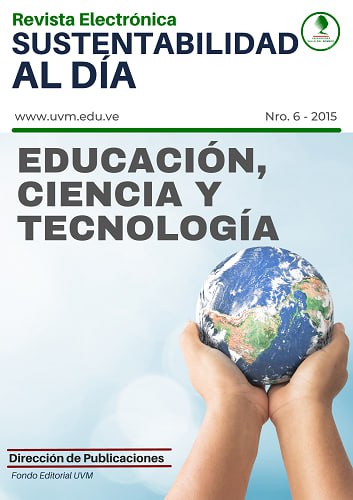Environmental management plan oriented environment protection and conservation of school
Keywords:
Environmental Management, Environmental Protection ConservationAbstract
Environmental education should be understood as a systemic process, from the knowledge that reflective and critical of reality biophysical, social, political, economic and cultural, allows the individual to understand the interdependence with the environment so that the appropriation of concrete reality can be generated in him and in his community, attitudes of appreciation and respect for the environment. Under this perspective, the objective of the study was aimed at determining the environmental management as a strategy for the protection and conservation of the school environment. The research adopted a descriptive explanatory based on a nonexperimental design transeccional. By type corresponds to a field study. The population consisted of fifteen classroom teachers of primary education, which is considered the total teacher population was considered a population census. As an instrument used a questionnaire applied to teachers contentivo of 20 items with four response alternatives, which was validated by expert judgment, reliability was calculated through Cronbach Alpha coefficient, the result was 0.86 was used technical analysis as descriptive statistics. The results allow us to determine which environmental management as a strategy for the protection and conservation of the school environment is not being applied by teachers in their teaching practice. Therefore, it is necessary to improve education that schools, management systems incorporating environmental quality by establishing measures in accordance with the environmental requirements.
References
Álvarez, P. (2006). La Contaminación Ambiental. Editorial Félix Valera. La Habana Cuba
Álvarez, N. y Rivarosa, A. (2000): Problemas Ambientales. Editorial Rei. Madrid
Aragón (2005). Modelo Europeo de Gestión de Calidad Guía para la Evaluación Ambiental. Ministerio de Educación de Chile.
Ayes, G. (2003). Los Problemas Ambientales en la Escuela. Alminar, Nº 28:234. Consejería de Educación y Ciencia. Delegación de Córdoba.
García, J. (2004). Estrategias didácticas en Educación Ambiental. Málaga: Ediciones Aljibe.
González E. (2003). Orientaciones Didáctica para la Educación Ambiental en Educación Secundaria. ALDEA. Junta de Andalucía. Sevilla.
Gordillo, B (1995). Fundamentos Pedagógicos para la Educación Ambiental; Universidad de Córdoba .Colombia Fondo Editorial
Hernández, Fernández y Baptista (2006). Metodología de la Investigación Tercera Edición. México. Editorial McGraw-Hill
Mazari, M. (2004). Rescate de Áreas Verdes .Publicación Del Comité Editorial. Barcelona
-Meinardi, A. (2002). La Educación Ambiental en el Aula. Una propuesta para Integrar contenidos multidisciplinares a través de la argumentación. Barcelona.
Organización de las Naciones Unidas (1972) Declaración de Estocolmo sobre el Medio Ambiente Humano Conferencia de las Naciones Unidas Documento en Línea. Disponible en http://www.erres.org.uy/di0672.htm. consultado 11/09/2010
UNESCO.(1987) Informe Brundtland presentado por la Comisión Mundial Para el Medio Ambiente y el Desarrollo de la ONU Resolución 23/6, el 28 de octubre de 1987
Villegas D. (2008) Gestión Ambiental de Residuos Sólidos Tesis de Maestría Gerencia de la Educación. Universidad de los Andes. Centro Regional de Investigación Humanística Mérida
Downloads
Published
How to Cite
Issue
Section
License
Copyright (c) 2015 Sustentabilidad al dia

This work is licensed under a Creative Commons Attribution 4.0 International License.
You are free to:
- Share — copy and redistribute the material in any medium or format for any purpose, even commercially.
- Adapt — remix, transform, and build upon the material for any purpose, even commercially.
- The licensor cannot revoke these freedoms as long as you follow the license terms.
Under the following terms:
- Attribution — You must give appropriate credit , provide a link to the license, and indicate if changes were made . You may do so in any reasonable manner, but not in any way that suggests the licensor endorses you or your use.
- No additional restrictions — You may not apply legal terms or technological measures that legally restrict others from doing anything the license permits.







